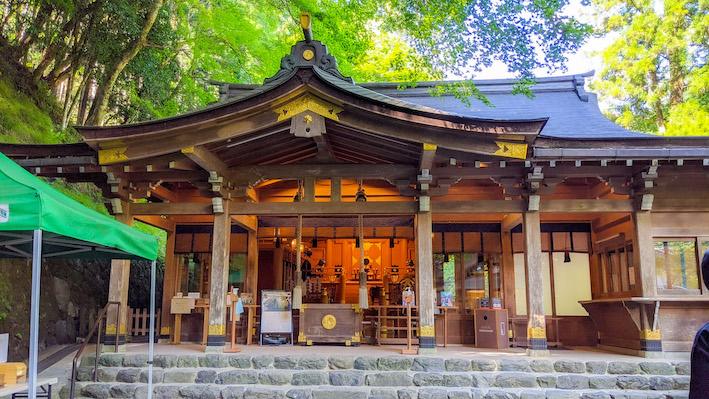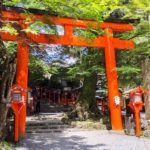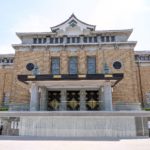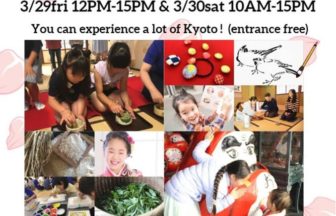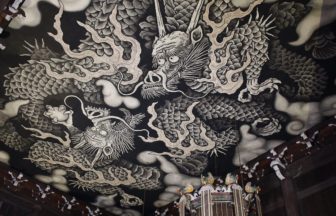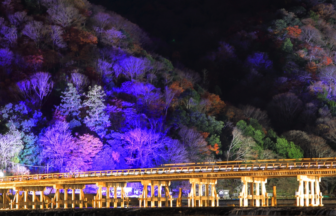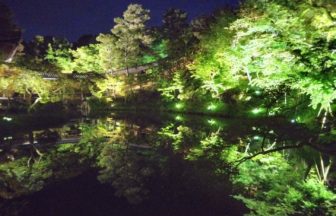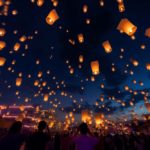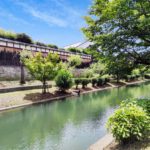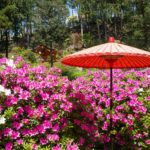Continuing from the last time, I will introduce the highlights of the Kifune Shrine.
Why are so many worshipers visiting this shrine, which is by no means an easily accessible place?
Knowing its charm will make your trip to Kyoto even more enjoyable.
The origin of the name of Kifune Shrine is generally the theory that “Kifune” means “the root where power erose”, which is the source of life. Although the date of its foundation is unknown, according to legend, the shrine began when Emperor Jimmu’s mother, Tamayorihime, boarded a yellow boat and traced the Yodo and Kamo rivers from Osaka Bay to the present Okumiya to worship the water god. It has been with.
The god of ritual is Takaokami no Kami, and this god is the same water god as Kuraokami no Kami in Okumiya. The word “Okami” is an ancient word meaning “dragon”, and in the Okumiya there is a “dragon hole” under the shrine, which is said to be a place of high luck. You can see how lucky Kibune Shrine is.
Visiting Three Shrines
Kifune Shrine is divided into three parts, the main shrine, the middle shrine, and the Okumiya, from the front when viewed from the station.
In guidebooks, etc., you can see explanations such as “You should visit the main shrine at first, then the Okumiya and the last should be the middle shrine in that order.”
Each is located less than 10 minutes away, so it might be a good idea to take a walk around Kibune.
The Main Shrine

The stone stairs immediately after arriving at the shrine and the vermilion lanterns lined up on both sides of it are the best photo spots in the shrine. Not only in autumn, but also in summer, the maple is beautiful, and in winter, it is a place with a magnificent view of snow. The main shrine was built in the wake of the relocation of God when the Okumiya was damaged by the flood.
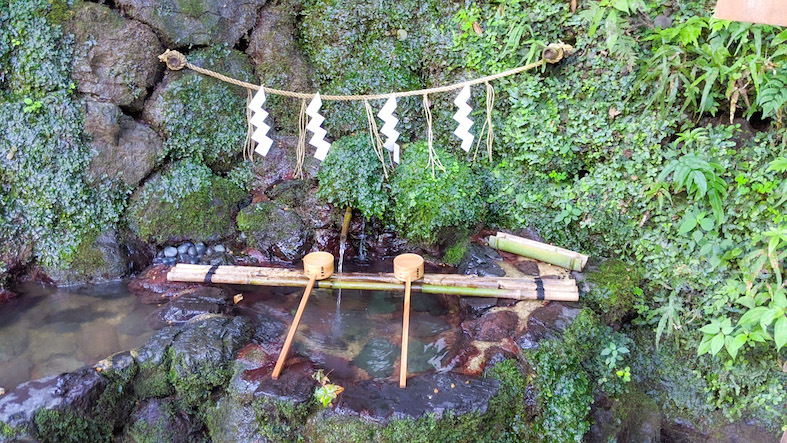
Pure water flows in front of the main shrine, and it is the spring water of Kibuneyama that has never withered. The water can be freely drawn for free, so it is crowded with many worshipers. Also, you can fortune-tell the “water fortune-telling lottery”, which is strange fortune-telling that floats on the water and the characters appear. It is said that there may be a terrible illness, but it is good to keep it as a chance to reflect your mind or behavior.
Chugu/ Yui no yashiro
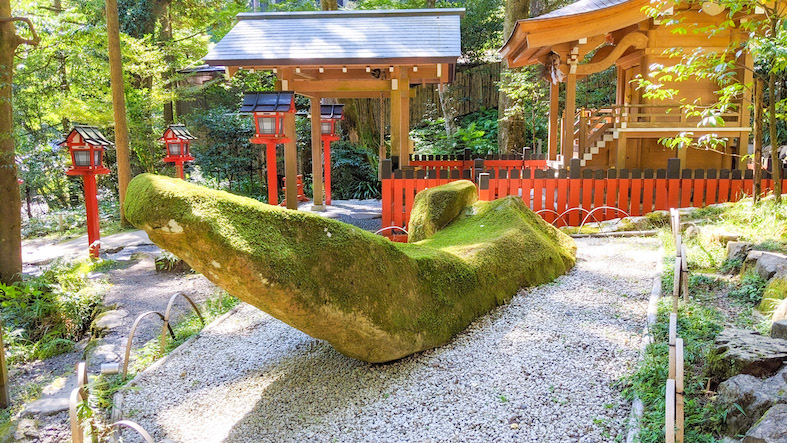
At the association, “Iwanaga Hime no Mikoto” is enshrined as a deity.
The marital relationship that Izumi Shikibu, a female poet of the Heian period, had been worried about has improved, and it has become popular as a power spot for love.
“Matching” refers not only to romance, but also to family relationships and relationships at work, so it may be good for people who wish for new things or the development of things.
Okumiya

Below the main shrine of Okumiya, there is a hole called “Dragon Hole” that gives off the spirit of the earth. It is so sacred that it should not be seen by anyone, and no one is allowed to see it. The main shrine of Okumiya is built on such a sacred spot.
Next to the shrine, there is a stone called “ship-shaped stone” that is piled up in the shape of a ship. It is said that God, Tamayori-hime arrived at Kibune from Osaka on a yellow ship and hid the ship she was on at that time.
“Kegare” is an important mind in Shinto, but according to one theory, it refers to the meaning of people losing their energy. Why not try supplementing your energy in this place called Kibune, where the energy of all things springs up.
Do you need more information?
You should receive such local information of Kyoto by an application “KoI APP”.
With this application, even if you don’t have Wi-Fi, you can find nearby stores and so on.
You can install the application from the following URL.


